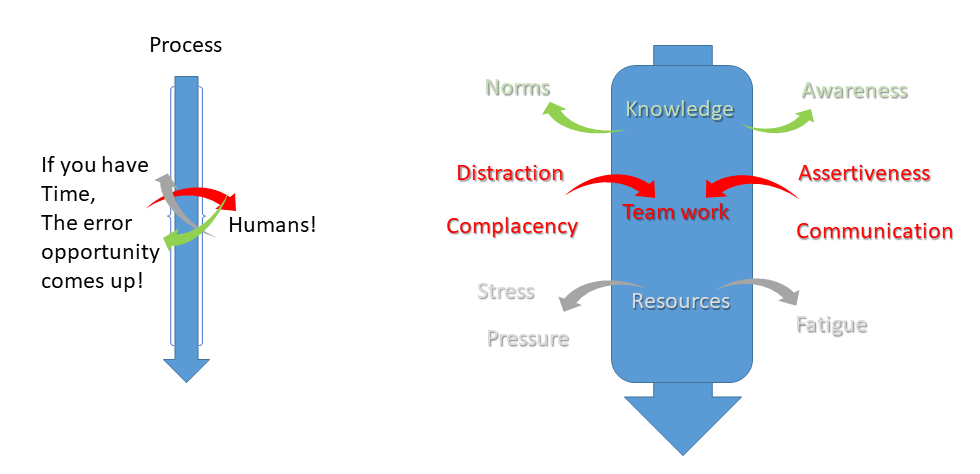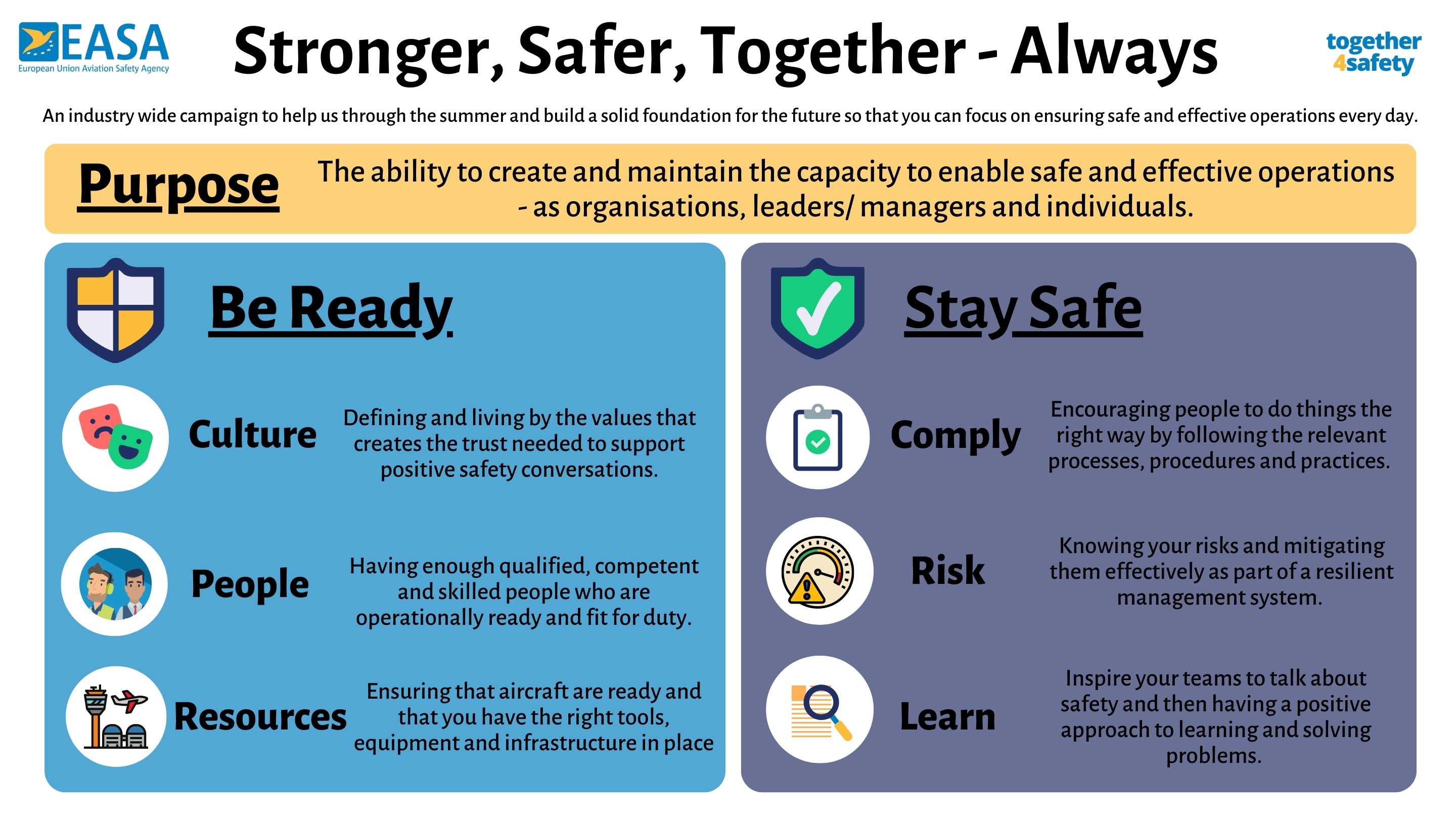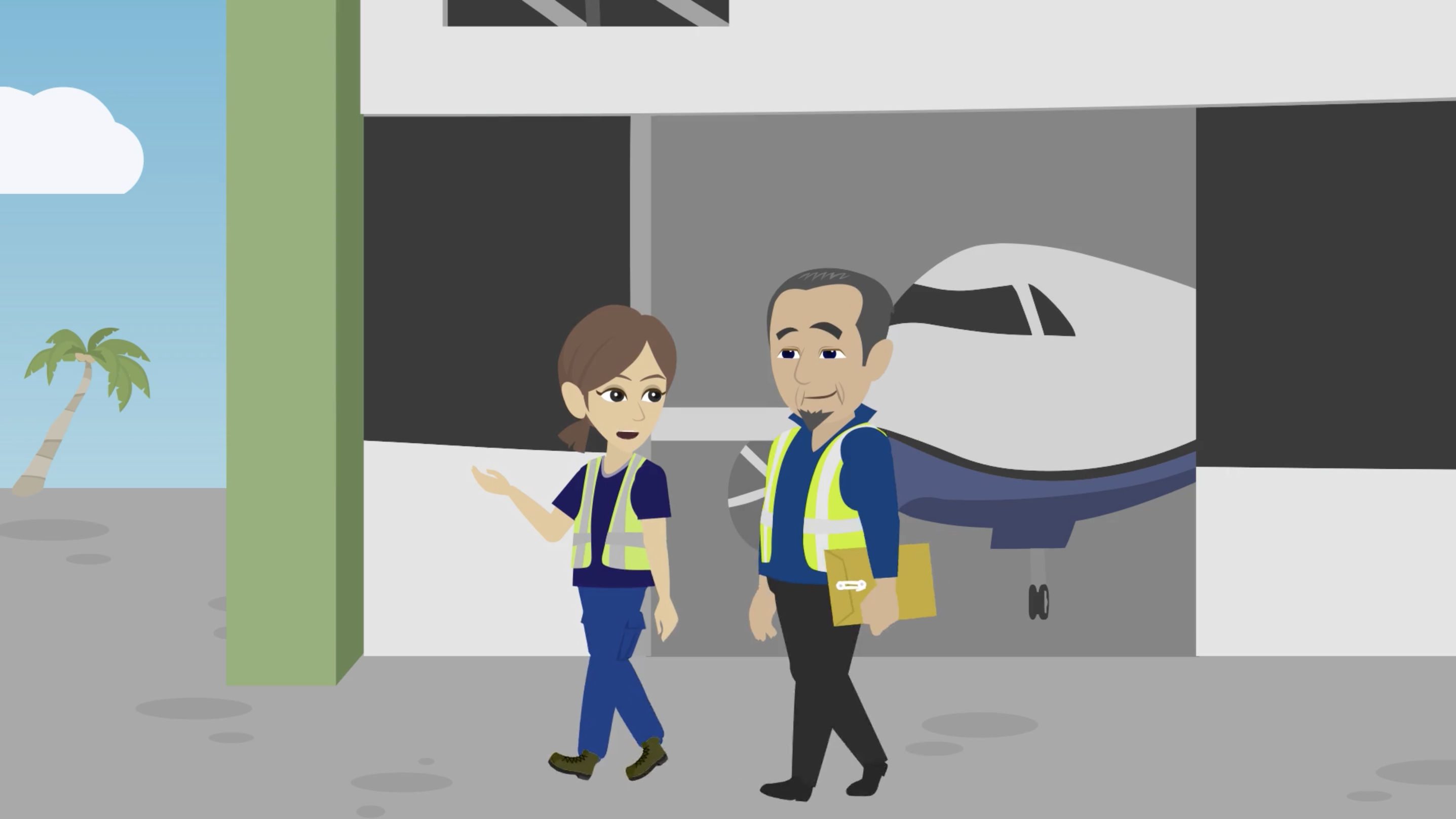It is an exciting time for our industry as we head towards another summer season. However, we also face a number of major challenges that bring with them new safety risks that we need to understand and mitigate effectively to keep our staff and the travelling public safe.
Safety issues, familiar challenges and the need to know what is coming over the horizon
The 2024 version of the European Plan for Aviation Safety (EPAS) has now been published and in Volume III we have updated the list of safety issues across the different domains. We recently published the first edition of Conversation Aviation for 2024. It was written from a Domain perspective, focusing on some important things for each of the different operational staff groups.
Each article will highlight the most important safety issues that are outlined in the EPAS Volume III. These safety issues are identified through the European Safety Risk Management (SRM) process that analyses the occurrences reporting under Regulation (EU) 376/2014 (that you might know as the occurrence reporting regulation) along with other available sources of data. The analysis is supported by expert judgement from EASA’s collaborative groups and advisory bodies.
This approach is hopefully useful to help Safety Managers and their teams consider how the different safety issues relate to your own organisation and its operation. We also hope you find each of the domain specific articles useful for your own safety promotion with the different staff in your company.
The Dirty Dozen and the Safety Map
Having outlined the safety issues, we then also link them back to the Dirty Dozen to help make them easier to understand and to think about practical mitigation. The Dirty Dozen were originally developed by the FAA in US as 12 items that could then be used on a calendar across the months of the year. This is something we are also planning for this year so be prepared for specific focus topics each month.
In case you haven’t heard of the Dirty Dozen before, they are 12 things related to human and organisational factors that are common safety challenges our staff face in their day-to-day work. They also help organisations to put in place practical risk mitigations for their safety issues that actually help front line workers to deliver safe and effective operations.
The Dirty Dozen are complacency, distractions, fatigue, pressure, stress and norms then matched with a lack of communication, knowledge, teamwork, resources, assertiveness and awareness. These are already useful as individual items but its even better to link them to Rasmussen’s space of possibilities model (of which more later) and its three pillars of Knowledge, Teamwork and Resources.

This has a clear link to the left side of our EASA Safety Map, where we cover Mindset, People and Resources. The people element of the map talks about “having enough competent people”, where competence is knowledge put into action and then directly link to norms and awareness in the Dirty Dozen.

Teamwork then cuts across all 3 areas on the left side of the map; the mindset the organisation and its people have when using the resources available to perform a specific operational tasks or activity. This then covers distraction, complacency, assertiveness and communication in the Dirty Dozen.
Finally, the Resources part clearly links to fatigue, pressure and stress – 3 areas we must focus on as an industry if we are going to manage our risks effectively to ensure safe and effective operations.
The most important thing is not to forget the specific operational task you are doing. Then be clear what are the risks or safety issues associated with that task that might lead to an accident or harm to someone. Finally, how are you going to manage those risks to an acceptable level. That is what safety is all about.
Some of the wider challenges in aviation
While operational staff face all sorts of day-to-day challenges like weather, operational delays, technical problems etc, there are many other wider things that will have an impact on our ability to operate safely. As our SM Director, Maria Rueda discussed in her foreword, our industry has to cope with a difficult world that is changing more rapidly than perhaps at any time in our lives.
Conflict has impacted many aspects of our operations. It has reduced the available airspace, led to jamming that has impacted satellite navigation and brought new cyber threats. We also to keep pace with rapid technological change such as Artificial Intelligence (AI), while Urban Air Mobility (UAM) is almost a reality that will see the dawn of a whole new type of aviation. There are also growing pressures to accelerate our actions on sustainability and weather changes continually impact our operations.
At a strategic level, the whole industry also has to find ways to deal with the post-COVID situation that has seen many experienced staff retiring or leaving the aviation for other industries. Our long term need for trained, skilled and competent staff will require us to inspire the next generation by creating organisations they want to work for in roles they will feel fulfilled in and that can assure them a long-term future.
The importance of collaboration and working together
When it comes to these strategic topics, what does this mean for you and your organisation? The reality is that no individual organisation can solve these challenges alone. This is why collaboration is so important. It is important to know the difference between cooperation and collaboration. Cooperation is mostly what we do in aviation, working together to help our organisations achieve our own goals. But these strategic issues are so important to the long term success and even survival of our industry that the only way forward is true collaboration – where we have a shared goal for the industry and do all we can to achieve that together.

There are also two other dimensions that should form a part of our collaboration (and not just cooperation) activities. The first is where the individual safety issues cross domain boundaries and need to have a common set of goals, messages and activities. The second are the more seasonal things, like summer ramp-up, winter operations and other such topics that require collaboration at the top level to align as an industry but then with associated cooperation that enables you as organisations to get on with the detail as you need to for your own operation alone.
The image below help to show what that looks like when we insert different strategic topics and safety issues – hopefully this helps to see what everything looks like and where we can work together.
Our call to action for 2024
What this means for the year ahead (and beyond) is that our safety efforts split in two:
- We cooperate operationally on how we can understand the day-to-day safety issues, think about them in simple, practical terms and solve them to meet the specific needs of our own organisation and its operational needs.
- At the same time, it is important we understand what topics are of such strategic importance that we need to really collaborate to achieve a shared goal for the good of the industry.
We look forward to continuing our safety journey together, to help you build safe and successful organisations and set the industry on the best course for a long-term, successful future
For info:
The essentials of safety leadership
https://www.icsi-eu.org/sites/default/files/2023-03/Icsi_essential_EN_l…
Leadership in safety
https://www.icsi-eu.org/sites/default/files/2020-07/Icsi_cahier_EN_lead…
Also
https://www.norskindustri.no/siteassets/dokumenter/hms/hop/norsk-indust…
Please log in or sign up to comment.